Did you know community hatcheries run by angling clubs raise almost two million fish each year to advanced life stages? And over six million two-day Walleye fry? Yes, thousands of volunteers committing almost 100,000 hours of work make this happen annually, to the benefit of all Ontario. And over 37 of these hatcheries are supported by the Community Hatchery Program (CHP), a partnership renewed for another three years this spring by the OFAH and MNRF.
Read on to learn more about how the CHP helps community hatcheries, even in the midst of a global pandemic.
CHP 101
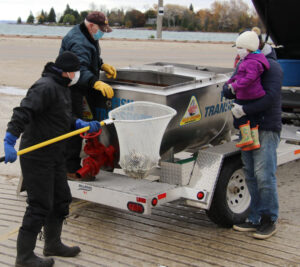 The CHP means more than just money to hatcheries, but the funding support is still really important! Without the yearly $150,000 in operational and infrastructure funding provided by the Province through the CHP, most community hatcheries could not continue to raise fish. Additionally, the CHP invests in community hatcheries with resources such as technical documents and best management practices, training and networking workshops and videos, assistance with government permitting, and occasionally bulk purchases of equipment or supplies. Coming soon is a guide on the best practices for testing the health of community hatchery fish, which will complement the training volunteers receive at workshops.
The CHP means more than just money to hatcheries, but the funding support is still really important! Without the yearly $150,000 in operational and infrastructure funding provided by the Province through the CHP, most community hatcheries could not continue to raise fish. Additionally, the CHP invests in community hatcheries with resources such as technical documents and best management practices, training and networking workshops and videos, assistance with government permitting, and occasionally bulk purchases of equipment or supplies. Coming soon is a guide on the best practices for testing the health of community hatchery fish, which will complement the training volunteers receive at workshops.
The OFAH administers all of this on behalf of the Province, so if you reach out to the CHP, on the other end of the phone or e-mail or Facebook post you’ll find me, the CHP Coordinator. I’ve been with the OFAH since 2008, first leading habitat projects for Atlantic Salmon restoration and then taking over the helm of the CHP in 2016.
CHP Helps Hatcheries Through COVID-19
Like every aspect of our lives this year, COVID-19 affected hatcheries. COVID-19 restrictions kept all Walleye and Rainbow Trout hatcheries from collecting eggs this spring. While everyone is disappointed this means no production from these hatcheries this year, fisheries work with a long view, and even naturally reproducing populations experience poor years every so often, so we expect no significant long-term impacts down the road. To help these hatcheries get through this tough time though, the CHP was able to supply them with funding for their ongoing expenses such as land leases and hydro. Hatcheries still raising fish also had to adapt to the changing circumstances, and adjusted to have volunteers come in on alternating days, wear masks in the hatchery, and social distance when stocking fish.
How You Can Help Community Hatcheries
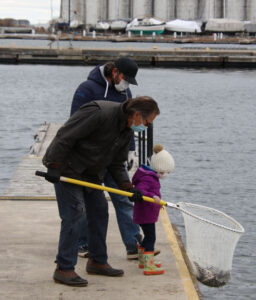 Community hatcheries work for all of us and all of us can help them deal with the final blow from COVID-19 – the cancellation this year of so many of their fundraising activities like fishing tournaments and dinners. The CHP still only supplies about 25% of the funding these hatcheries work with, so if you find yourself with the resources, please think about finding a local community hatchery and contributing some time or money. You can find your local hatchery on the CHP website:
Community hatcheries work for all of us and all of us can help them deal with the final blow from COVID-19 – the cancellation this year of so many of their fundraising activities like fishing tournaments and dinners. The CHP still only supplies about 25% of the funding these hatcheries work with, so if you find yourself with the resources, please think about finding a local community hatchery and contributing some time or money. You can find your local hatchery on the CHP website:
www.communityhatcheries.com/volunteer
For More Information
Website: www.communityhatcheries.com
Facebook: @communityhatcheries
And to learn more about what these great volunteers do year in, year out, the CHP YouTube channel (search “Community Hatcheries”) has a video series called Hooked ON Hatcheries that highlights the work of community hatcheries in Ontario – www.youtube.com/channel/UCxppaTjlvfJ0xRYlBa41eIg.

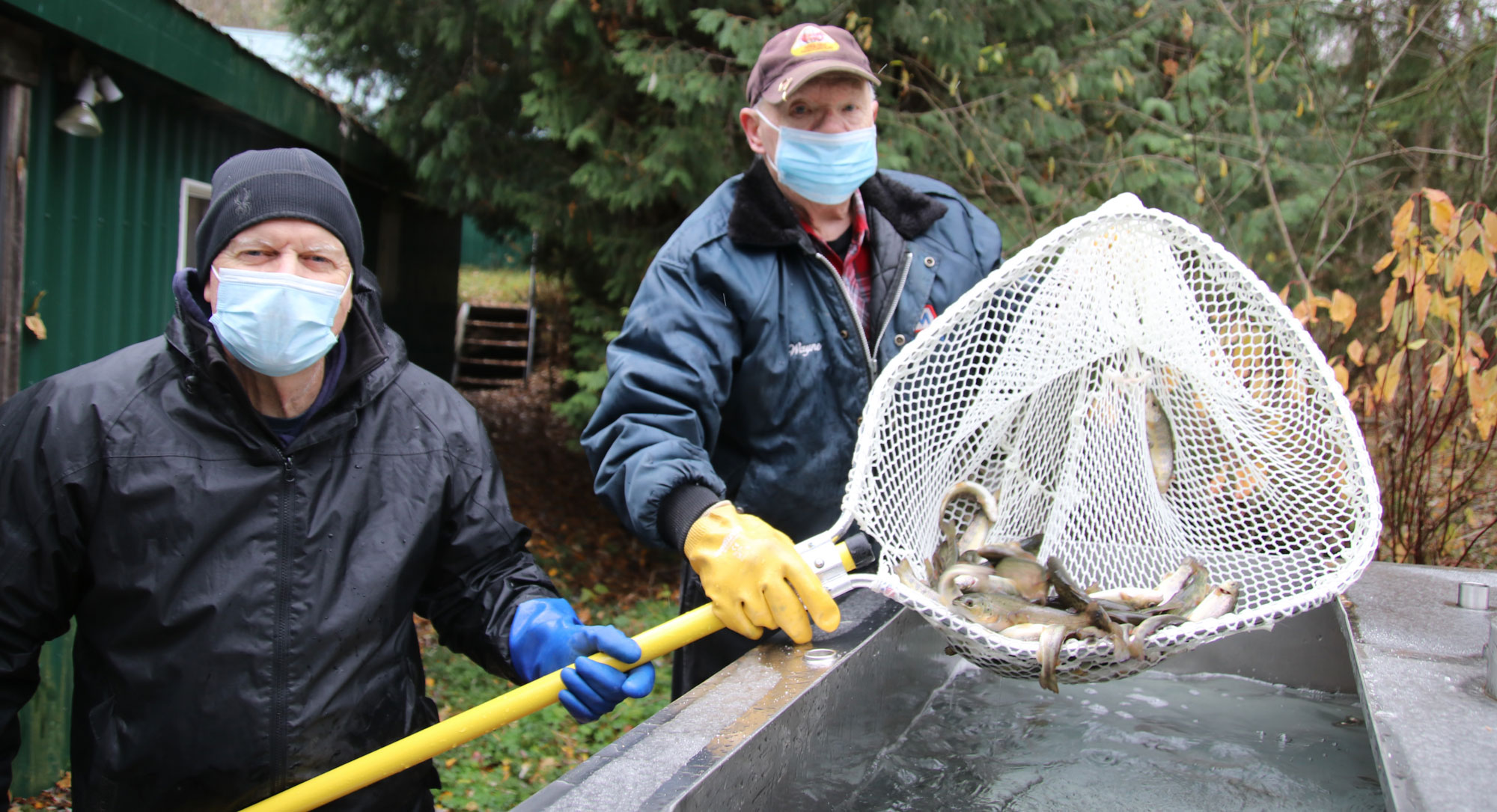
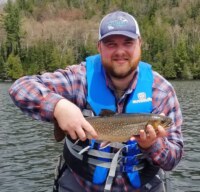
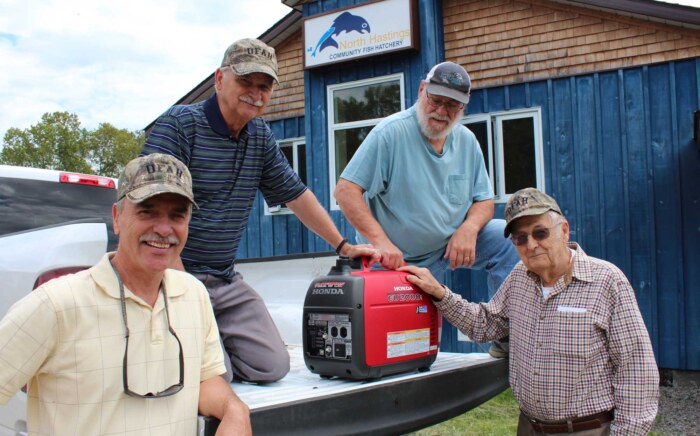
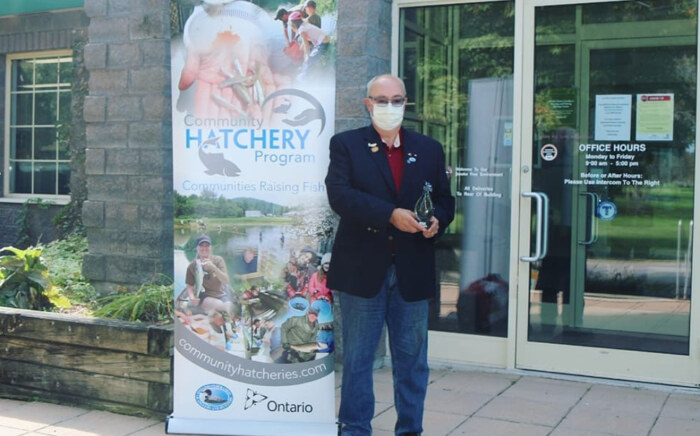
Really missed the opportunity to help with the Atlantic Salmon stocking this year (COVID)